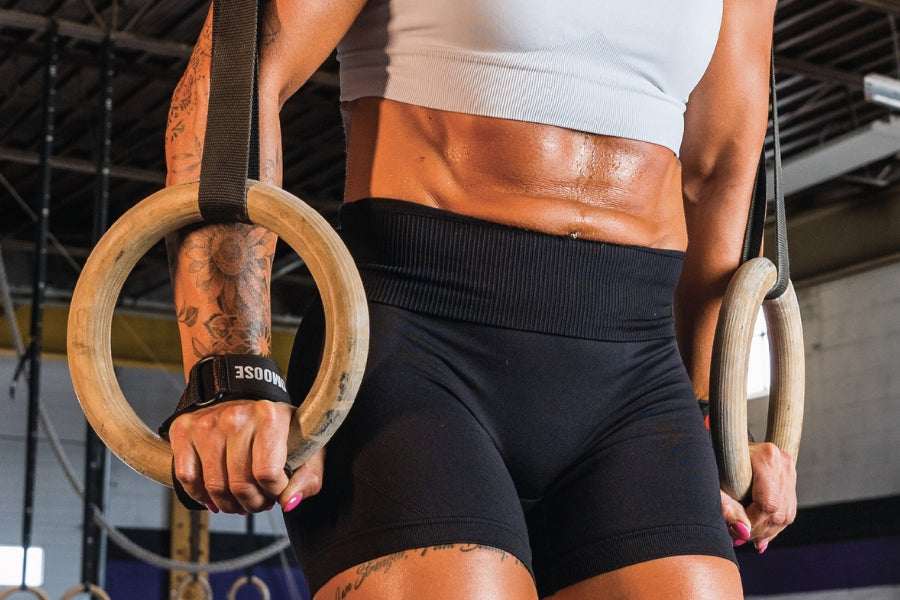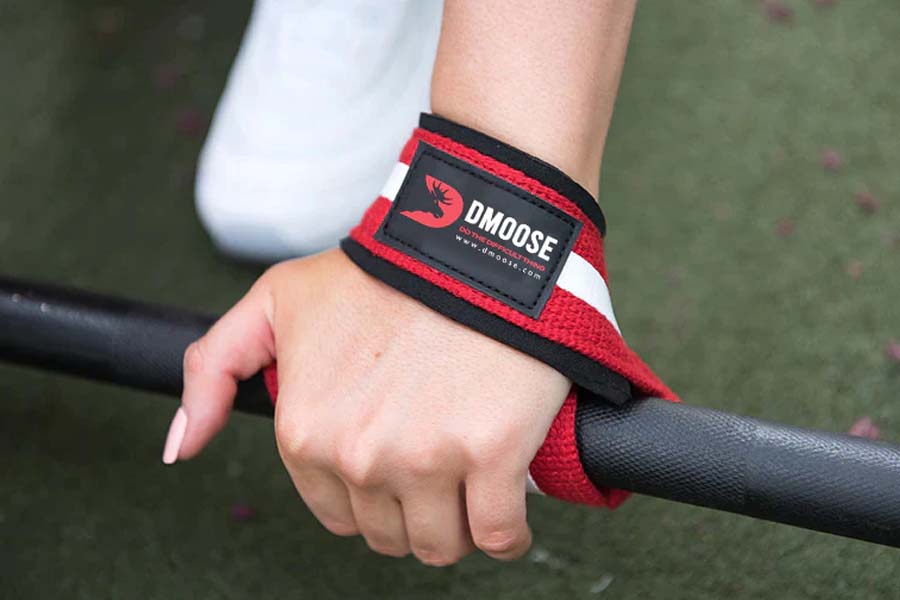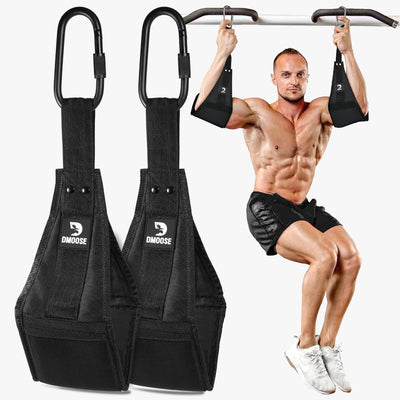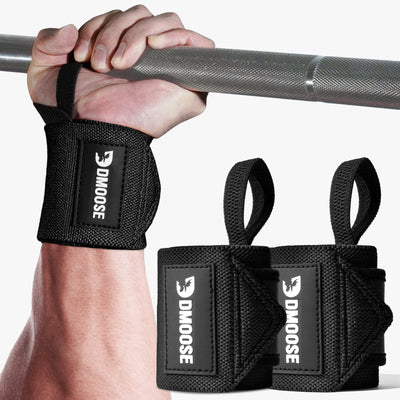Trying to decide between Lifting Grips and Weight Lifting Straps can be confusing, right?
With so many options out there, it’s tough to know which one actually suits your workout needs.
Both promise to boost your performance, but how do you know which one to choose?
Let’s break down the differences and help you make the right decision for your training so you can stop stressing and start lifting more.
Comparison: Lifting Grips vs. Weight Lifting Straps
| Feature | Lifting Grips | Weight Lifting Straps |
|---|---|---|
| Grip Support | Provides a solid grip for dynamic lifts. | Secures bar for heavy, sustained lifts. |
| Best for | Quick lifts like pull-ups. | Heavy lifts like deadlifts. |
| Durability | Made of rubber or leather. | Made of fabric, built for heavy-duty use. |
| Ease of Use | Easy to put on, ideal for quick workouts. | Takes time to adjust but offers more stability. |
| Support Level | Moderate support for lighter lifts. | High support for heavy lifting. |
| Comfort | Comfortable and flexible. | Can be restrictive but offers better control. |
CrossFit Lifting Grips

CrossFit is all about high-intensity training that demands strength, endurance, and consistency. One key area where many athletes struggle is grip strength, which plays a crucial role in holding onto equipment and performing lifts with proper form. Weak grip strength can lead to fatigue, injuries, and missed opportunities for progress, this is where CrossFit lifting grips come in.
Better Grip Strength Control Than Gloves
CrossFit lifting grips provide better grip strength than traditional gloves, allowing athletes to lift heavier and perform better in intense CrossFit workouts without worrying about slipping or fatigue.
Less Hand Fatigue Compared to Traditional Gloves
Unlike lifting gloves, which cover your entire hand, CrossFit grips leave your fingers exposed. This reduces hand fatigue and allows for better control during dynamic movements like pull-ups and kettlebell swings.
More Control During Fast Movements Than Straps
While lifting straps are ideal for heavy lifts, CrossFit lifting grips offer more control during fast, dynamic movements. They provide a secure yet flexible grip that lets you perform high-intensity exercises with ease.
Quick and Easy to Use, Unlike Lifting Straps
Unlike lifting straps, which require more time to adjust, CrossFit lifting grips are easy to put on and get into action quickly, making them ideal for fast-paced workouts and transitions between exercises.
More Stylish and Customizable Than Lifting Straps
CrossFit lifting grips not only provide functional support but also come in a variety of colors and designs. Unlike lifting straps, which are usually plain, they offer a way for athletes to express their personal style while training.
Lifting Straps

Lifting straps are another tool that significantly improves grip strength and control during heavy lifting. They are long, durable straps that wrap around the barbell or dumbbell and then around the lifter’s wrists, securing a firm hold. By providing a more secure grip, lifting straps help reduce the risk of slippage, making it easier to lift heavier weights.
More Support for Heavy Lifts Than Lifting Grips
Unlike CrossFit lifting grips, lifting straps provide more support during heavy lifts, such as deadlifts, by securely wrapping around the bar and your wrists. This prevents grip fatigue and ensures you can lift heavier weights without worrying about your hands giving out.
Better Stability for Heavier Weights Than Grips
Lifting straps offer greater stability compared to lifting grips, especially for exercises like deadlifts. They ensure a firm, secure hold on the bar, making them better suited for exercises where grip failure is a common challenge.
Ideal for High-Weight, Low-Movement Exercises
While lifting grips excel at dynamic, high-rep movements, lifting straps are perfect for static, high-weight exercises. They help you maintain a steady grip and avoid injury, especially when lifting heavy loads in exercises like deadlifts or shrugs.
More Durable Than CrossFit Lifting Grips
Lifting straps are made from thick, durable fabric that stands up to heavy use, unlike CrossFit grips, which are designed more for comfort and grip control during lighter, high-intensity workouts. Lifting straps are built for long-term durability, especially during heavy training.
Better for Strength Focus Than Lifting Grips
When your primary focus is on lifting heavy weights, lifting straps are more beneficial than lifting grips. They help you maintain your focus on strength and muscle engagement without worrying about your grip strength hindering your performance.
Which Tool Should You Use for Your Lifting Goals?
Choosing between lifting grips and lifting straps depends on your specific training needs, experience level, and fitness objectives. Each tool has its own strengths and weaknesses, and understanding these differences can help you make the best choice for your workouts. Let’s break down which tool suits various fitness goals and lifting styles.
For Beginners
If you're just starting out with weightlifting, lifting grips are an excellent option. They’re easy to use, lightweight, and provide a secure grip on the bar, making them a great choice for newcomers. They’re especially useful for preventing hand blisters and calluses, which can be a concern for those not yet accustomed to handling heavy weights. They are great to achieve your fitness goals especially as a beginner.
For CrossFit Athletes
Lifting grips are ideal for CrossFit athletes who require quick, dynamic movements with solid grip control. They improve grip strength and give a more natural feel during exercises like pull-ups and kettlebell swings. For CrossFit enthusiasts who want to enhance their performance, lifting grips provide the perfect balance of comfort and control during high-intensity workouts.
For Heavy Lifting and Maximum Support
Lifting straps are a better option when you’re focusing on lifting heavier weights or doing compound exercises like deadlifts. They offer more support than lifting grips, especially when your grip strength begins to fatigue. Straps help secure the bar in your hands, allowing you to lift heavier loads and prevent slippage, which is crucial for maintaining proper form.
When Grip Strength Is a Limiting Factor
If you’re dealing with grip fatigue during heavy lifts, lifting straps provide the necessary support. Straps allow you to focus on your form and the muscle group you’re targeting, rather than worrying about your hands giving out. This is especially important for exercises like deadlifts, where grip failure is often a limiting factor.
For Consistency and Injury Prevention
Both lifting grips and lifting straps help reduce the risk of injury, but the right choice depends on your training routine. If you want to focus on improving your grip strength and prevent blisters, lifting grips will be your go-to. However, if your main concern is heavy lifting with maximal support, lifting straps will provide the extra security needed to keep your hands from giving out. Either way, you’ll be able to lift more safely and consistently.
FAQs
1. Are there any safety concerns when using lifting grips or lifting straps?
Yes, there are safety concerns when using lifting grips or lifting straps. It is important to use them appropriately and to follow proper lifting techniques to avoid injury. Lifters should also be aware of the weight limits for their lifting grips or lifting straps and keep them high to prevent equipment failure.
2. Can lifting grips or lifting straps be used for all types of weightlifting exercises?
While lifting grips and lifting straps can be useful tools for weightlifters, they may only be suitable for some types of weightlifting exercises. For example, lifting straps may not be suitable for Olympic weightlifting exercises such as snatch, clean, and jerk. Lifters should research and determine which tools best suit each exercise they plan to perform.
3. Are there any alternative grip strength training methods besides lifting grips or lifting straps?
Yes, several alternative grip strength training methods can be used in conjunction with or instead of lifting grips or lifting straps. Some examples include grip strengtheners, wrist rollers, and farmer's walks. It is important to incorporate a variety of grip strength training methods to achieve a well-rounded and strong grip.
4. How do I properly maintain and care for my lifting grips or lifting straps?
Proper maintenance and care of your lifting grips or lifting straps is important to ensure their longevity and effectiveness. It is recommended to clean them after each use and to store them in a dry and cool place to prevent damage. Lifters should also inspect their equipment regularly for any signs of wear and tear and replace them as needed.
5. Are there any differences in size or fit for lifting grips or straps?
Yes, lifting grips and lifting straps may come in different sizes and fits to accommodate different hand sizes and preferences. It is important to choose the appropriate size and fit to ensure optimal performance and avoid discomfort or injury. Lifters should consult the manufacturer's guidelines or seek the advice of a professional trainer to determine the best size and fit for their needs.
Conclusion
Choosing between lifting grips and lifting straps comes down to your specific fitness goals, training style, and the type of lifts you're performing.
If you're focused on dynamic movements and building grip strength, lifting grips are your go-to choice. However, if you're looking to lift heavier weights and need maximum support, lifting straps are the better option.
Both tools offer unique benefits, and understanding when and how to use them can elevate your training and help you reach your strength goals faster. Whatever you choose, make sure to use the right tool for your workout, and watch your lifting game improve!












